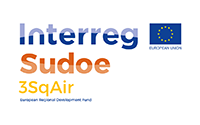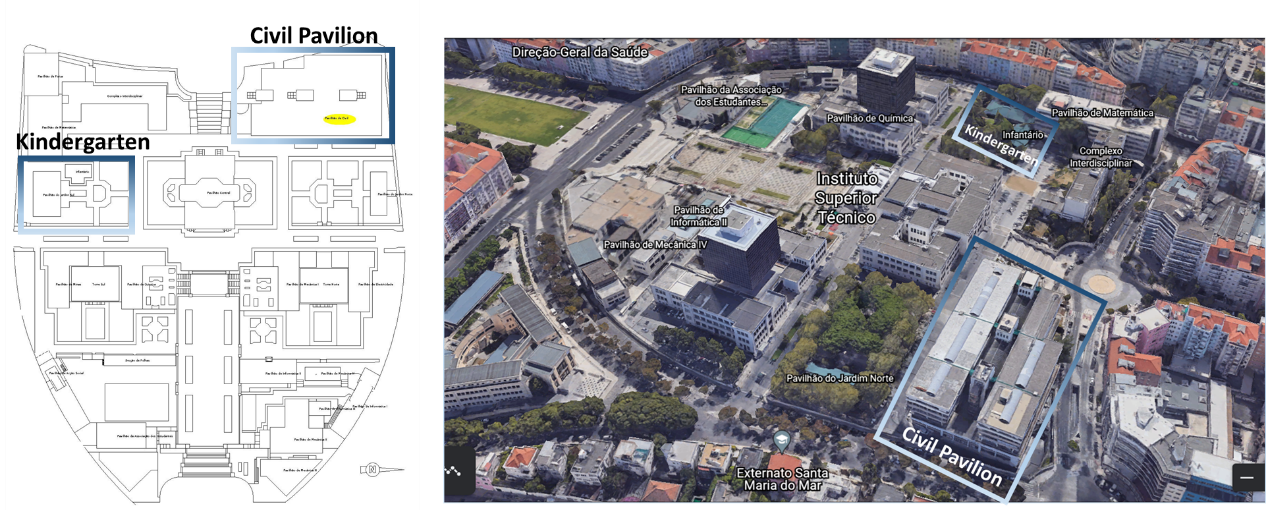
Demo-site 5.1 – Portugal
Instituto Superior Técnico
University
The 3SqAir project is a multi-partner and cross-border project. Its main goal is to design a “Smart” and “Sustainable” action plan, to ensure, through a common quality approach, the indoor air quality of French, Spanish and Portuguese educational buildings.
Objectives
The Deliverable 3.1.2-Best Practices guidelines and criteria indicators for better Indoor Air Quality in classrooms – was developed within the scope of the Activity 3.1of the project 3SqAir. The objective of this technical report is to define and present feedback on a remarkable indoor air quality (IAQ) management operation, through a reference framework of IAQ criteria in order to assess the inclusion of IAQ in school buildings.
This reference framework was established as part of the task 3.1.2 of the 3SQAIR project, the deliverable of which can be downloaded from the project website www.3SqAir.com
The approach has a dual objective:
– Improve stakeholder knowledge on how to manage IAQ in their own buildings.
– Propose a common methodology for comparative studies on “best practice” case studies.
Methodology
The objective of the 3SQAIR project is to define RIS31 strategies to improve indoor air quality IAQ in classrooms. One of the levers to achieve this objective is to share best practices (BP) with all stakeholders in order to enhance their knowledge, and consequently, their practices. To this end, we propose to identify the major action criteria to help stakeholders to improve IAQ in educational buildings.
Our work consisted in drawing up a first state of the art of methodologies for assessing the IAQ in educational buildings. This first analysis made it possible to identify a list of IAQ improvement levers considering technical and organizational. And, we propose a simplified methodology assessing a synthesis profile of the IAQ for feedback from operations.
In fact, the characterization of IAQ has many components, themselves linked to the complexity of the life cycle of a building. Such an analysis must be holistic because the IAQ of a classroom also depends on organizational aspects (maintenance and management of real estate), sociological (behavior and comfort of the occupants), economic (available resources) and even political considerations (exemplary public policies for contractors).
We propose a baseline to define common criteria for promoting best practices in IAQ in classrooms, which also lays down common guideline settings for smart, sustainable and energy efficient IAQ solutions. Through a selective bibliographic study and an in-depth presentation of the modeling of IAQ pollutants, we have identified 10 major indicators for the inclusion of IAQ, classified into 2 areas:
1. Building Facilities: “Technical Solutions On Iaq And Ventilation”
a) Pollutant sources
b) Intake and exhausts
c) Filtration
d) Air renewal systems
e) Air purification2. Stakeholders Organization: “Management”
f) Cost
g) Occupants’ comfort and behavior
h) Communication and quality management systems
i) Maintenance
j) Sustainability (environmental impact & energy efficient strategies)This report offers a common reference simplified methodology to establish comparative studies on IAQ in educational buildings. This methodology constitutes a basis for the practical resource (best practices experience feedback case studies) for stakeholders that have to be produced within the 3SqAir project, through the eponymous online platform website. It will be used to build an analysis framework for the 12 operations that are the subject of experience feedback as part of task 3.2.1 of the 3SQAIR project.
Case study: general description
The Portugal Instituto Superior Técnico is a University that welcomes 3744 students in its buildings.

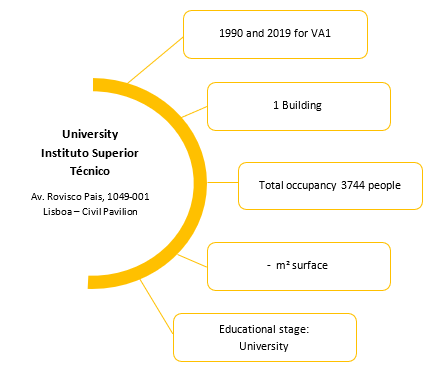
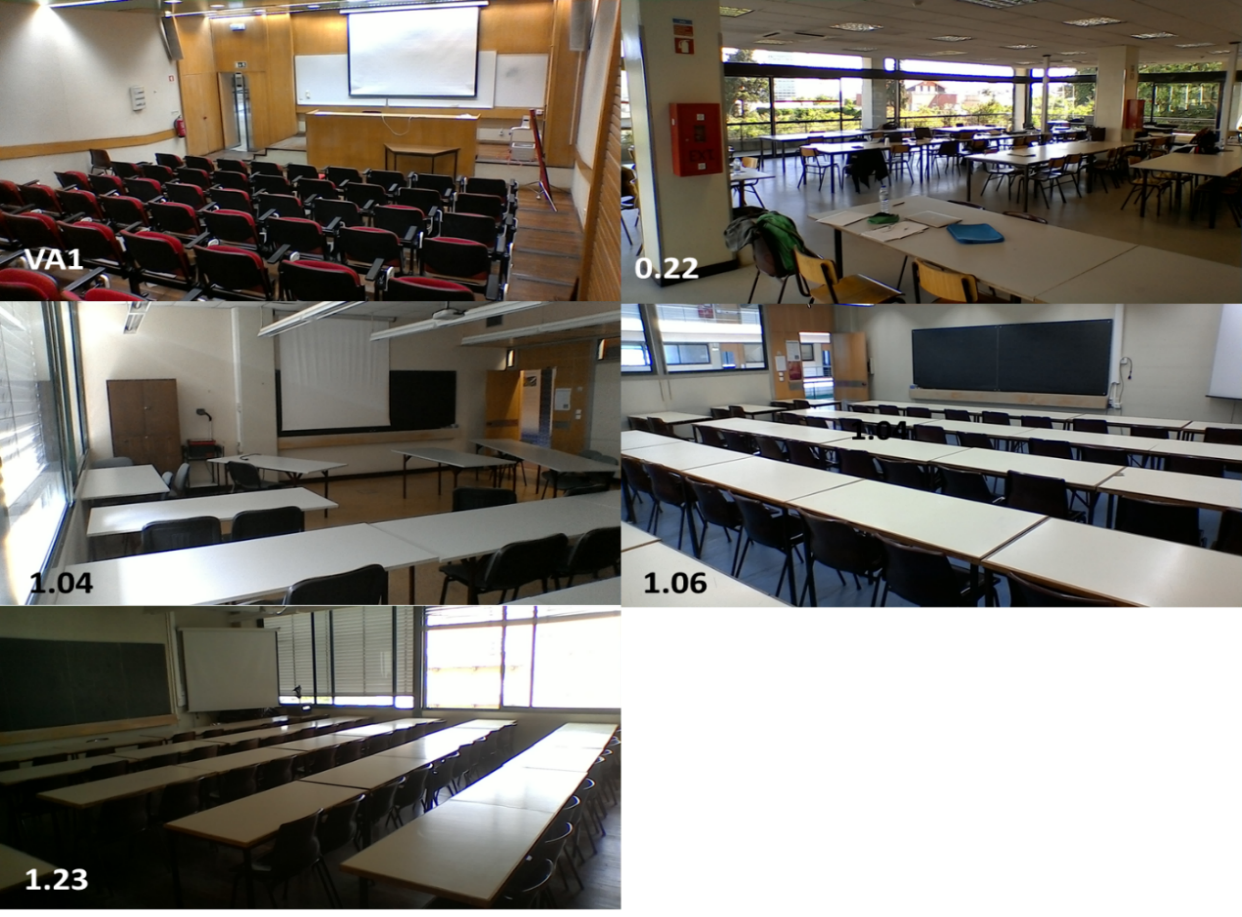
Case study: building facilities, technical solutions on IAQ and ventilation
A) Pollutant sources:
- Occupancy
- Art classes
- Clean products
- Blackboard + chalk in some classrooms
The Outdoor Environmental Zone
Urban areaIndustrial area nearbyNearest gas station (less than 1km)Parking lotPresence of electromagnetic wavesThe Indoor Environmental Zone
Maintenance products used for interior cleaningRoom’s ActivityWall and floor coveringsLuminaire type: fluorescent, halogen, LED
Heating method: 41 portable oil heatersB) Intake and exhausts:
Intake and exhausts self-adjust. The mechanical ventilation humidity-controlled air inlets and outlets are uncontrolled. The Air entry/evaluation through openings:
Windows surface:
Study room 0.22 – 71 m²
Classroom VA1 – without windows
Classroom 1.04 – 10 m²
Classroom 1.06 – without windows to the outdoor; 10 m² to the corridor
Classroom 1.23 – 10 m²Rooms VA1 and 1.06 – do not have windows to the outdoor;
Room 1.04 – has windows to the campus (limited number of cars and trees);
Room 1.23 and 0.22 – have windows to roads with intense traffic.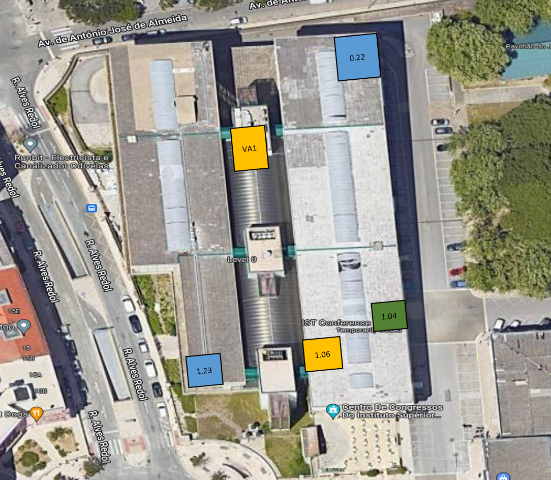
C) Air renewal systems:
Room VA1
- Served by a new HVAC system
- Air supplied to the classroom: 2600 m3/h
- Fresh air supplied to the classroom: 1375 m3/h
- The HVAC system is equipped with a main AHU, which is equipped with filters M5 + F7 and serves several classrooms. Then the air pass in several AHUs dedicated to specific classrooms that promote the recirculation of the air and are equipped with filters G4 + F7.
Room 0.22
- Without fresh air only through natural ventilation
- Filter G4
Room V1.04 and V1.06
- Served by AHU 2
- Filter G4
- Without recirculation
- Without energy recovery system
Room V1.23
- Served by AHU 5
- Filter G4
- Without recirculation
- Without energy recovery system
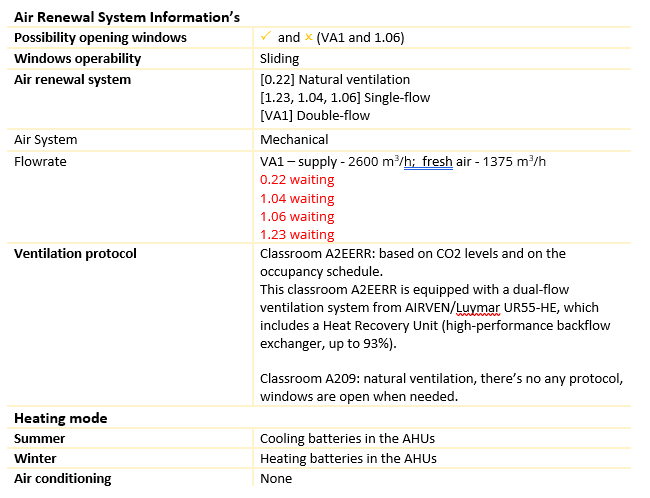
Case study: organization of stakeholders – building management
The company ARAMUS takes care of Preventive Maintenance, of a HVAC system
E) Occupants’ comfort and behavior
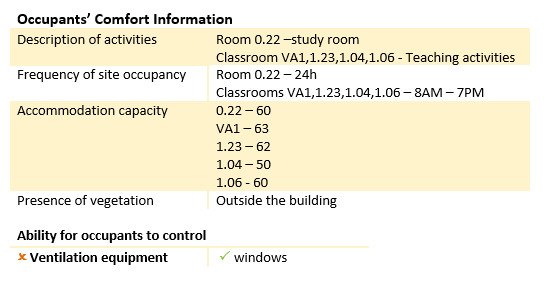
F) Communication and quality management systems
Certification 1 – Energy Certificate
Date of last acquisition, 2021
Support procedures have been put in place: Energy auditG) Maintenance
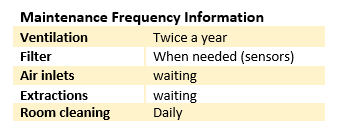
Company ARAMUS for the preventive maintenance, Local Maintenance team
Conclusion and perspectives
This work proposes a methodology for evaluating the IAQ in educational buildings. Through a deliberately simplified approach, we have defined a baseline based on two domains describing the building’s facilities and the organization of the whole stakeholder chain actors.
A summary of the multi-criteria analysis for this operation is presented in the form of a radar made up of the 10 benchmark indicators, established in task 3.1.2 of the 3SqAir project.
We have previously indicated that this type of analysis requires a transversal (holistic) approach, since all these criteria are interconnected and influence each other. In order to determine the relevance of taking into account the IAQ of a building, we propose to carry out a two-step approach:
1)First, an analytical approach: characterization of each of the 10 criteria separately, through a qualitative or quantitative approach;
2)Secondly, a global synthesis, through a graphic representation in the form of a “3SqAir profile”, with a radar representation, according to the a “basic” or “thorough” rating scale (see below, an example of fictive radars on the basis of a 1-5 scale, with a representation mode).
This work proposes a methodology for evaluating the IAQ in educational buildings. Through a deliberately simplified approach, we have defined a baseline based on two domains describing the building’s facilities and the organization of the whole stakeholder chain actors.
A summary of the multi-criteria analysis for this operation is presented in the form of a radar made up of the 10 benchmark indicators, established in task 3.1.2 of the 3SqAir project.We have previously indicated that this type of analysis requires a transversal (holistic) approach, since all these criteria are interconnected and influence each other. In order to determine the relevance of taking into account the IAQ of a building, we propose to carry out a two-step approach:
1) First, an analytical approach: characterization of each of the 10 criteria separately, through a qualitative or quantitative approach;
2) Secondly, a global synthesis, through a graphic representation in the form of a “3SqAir profile”, with a radar representation, according to the a “basic” or “thorough” rating scale (see below, an example of fictive radars on the basis of a 1-5 scale, with a representation mode).For operation Alameda Campus University-IST, the result is as follows:
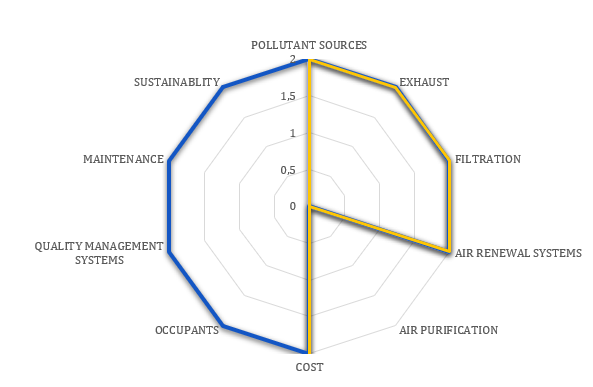
This result was established after a collective analysis of all operations, during the workshop held in Coimbra (Portugal) on 08/11/2022. During this workshop, the partners presented the 12 feedbacks and voted collectively to define the level of performance for each criterion and establish the corresponding radar profile.
